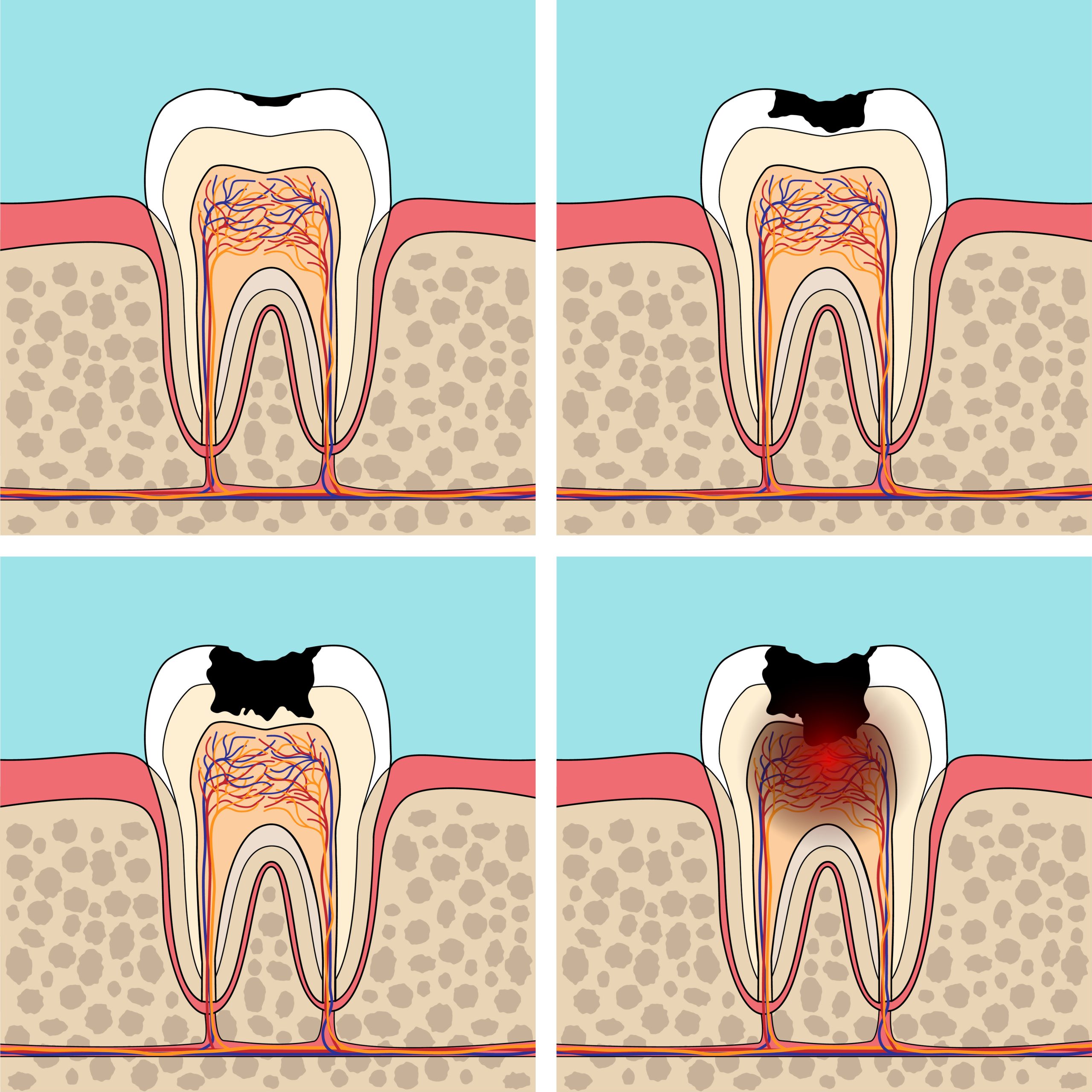Tooth decay is a common problem affecting millions of people each year, so it’s essential to understand the stages of tooth decay and how to prevent it. Everyone has heard the phrase “prevention is the best cure,” which also applies to tooth decay. Therefore, it’s crucial to understand tooth decay so you can take measures to prevent it and get timely treatment if it does occur.
In this blog post, we will discuss what causes tooth decay and its various stages of development. We’ll also provide tips on maintaining healthy teeth and gums. Let’s dive into what causes tooth decay, its different stages, and preventing it from spreading.
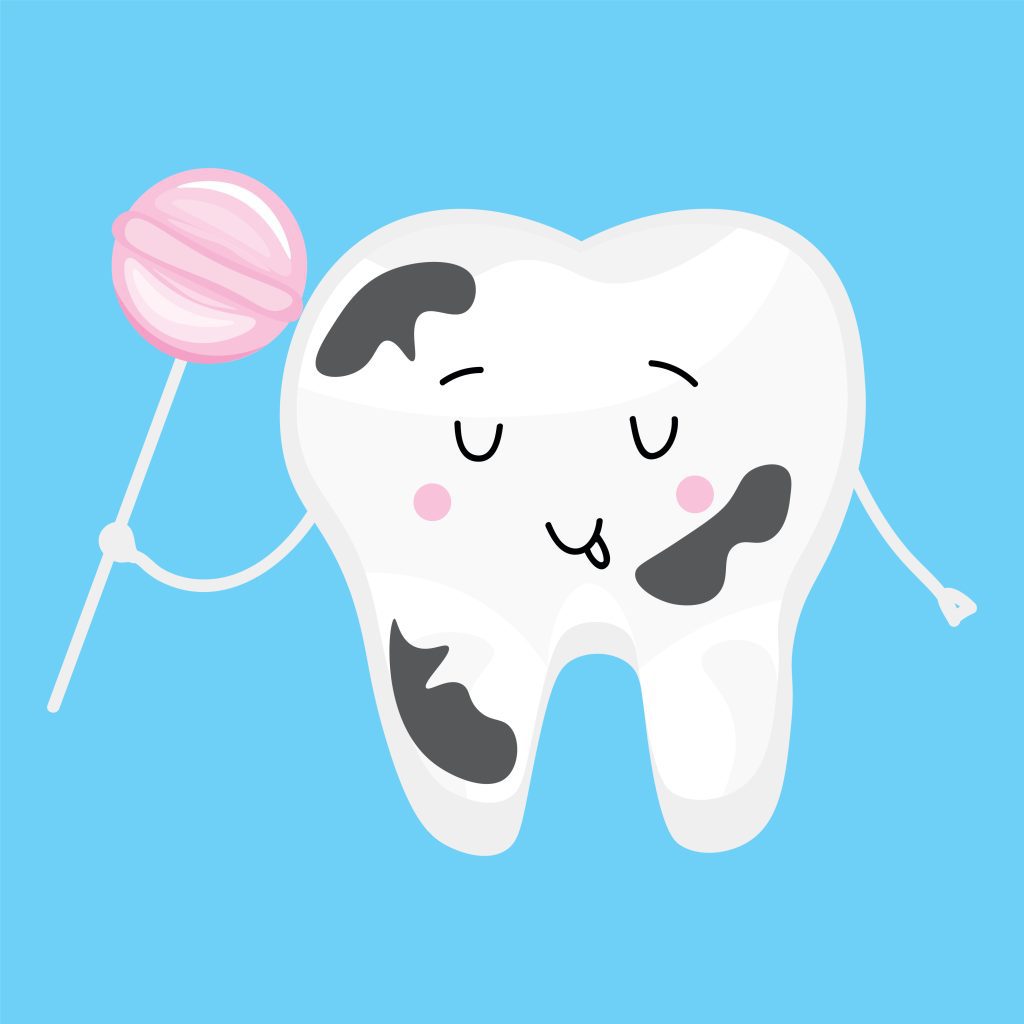
What Causes Tooth Decay?
The primary cause of tooth decay is inadequate oral hygiene. When food particles remain in the mouth for too long, they can form a sticky film called plaque that eventually hardens into tartar. Bacteria then feed on the plaque and tartar, creating an acidic environment in which tooth enamel begins to break down. This enamel erosion process leads to cavities and other forms of tooth decay.
Tooth decay is a problem experienced by many people; it’s a common dental issue that can cause pain and discomfort. People of all ages are susceptible to tooth decay, as it typically results from poor hygiene, eating sugary or acidic foods, and having a dry mouth. Other potential reasons for tooth decay include a poor diet, genetics, medications, and health conditions. Baby bottle tooth decay can even happen in baby teeth if infants and young children sip on sugary drinks for long periods. (If your child drinks only bottled water, it can’t hurt to talk with your dentist about fluoride treatments to supplement oral health care.)
The Stages of Tooth Decay
Tooth decay is a progressive condition that occurs in five stages:
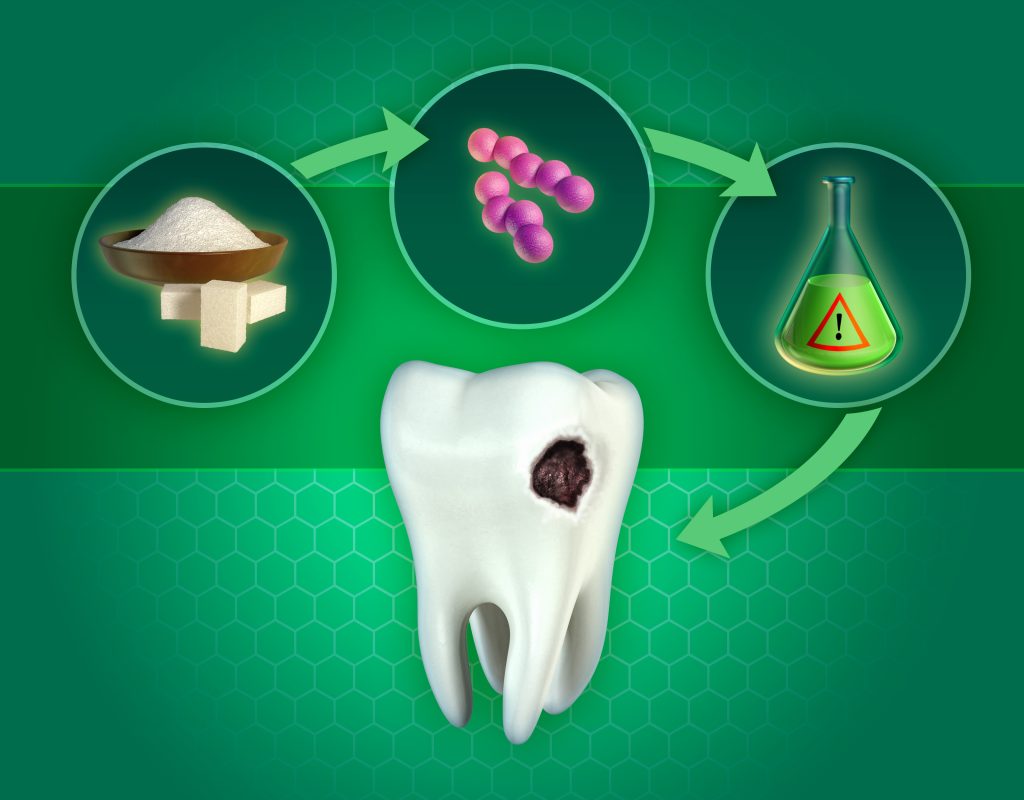
1. Demineralization
This is the initial stage of tooth decay when bacteria begins forming on the plaque buildup on teeth. It often appears as small yellow or white spots that may appear on your teeth due to minerals being lost from your enamel. If caught early enough, these spots can be reversed with better brushing habits and fluoride treatments in a process called remineralization.
Tooth decay starts in the enamel—the hard layer that covers each tooth. When bacteria accumulate on the teeth and produce acidic byproducts, this acid can start to break down the tooth enamel. This is when the enamel begins to weaken. This process is known as demineralization and can lead to cavities or small holes in the teeth.
This damage is often caused by poor oral hygiene or consuming sugary foods and drinks without brushing your teeth. At this stage, it’s essential to take preventative measures such as brushing twice daily and flossing regularly. Your dentist may also recommend regular fluoride treatments or topical gels that contain fluoride to help reverse the damage and prevent further deterioration.
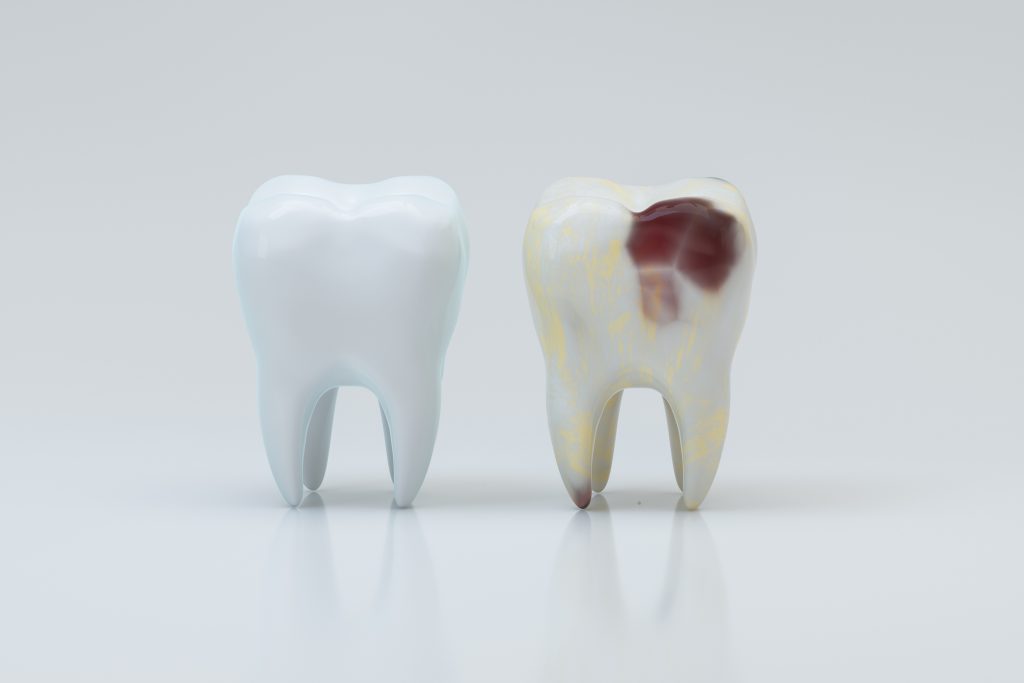
2. Enamel Decay
If the demineralization process isn’t reversed, it progresses into enamel decay. Enamel is the hard outer layer of your teeth, and it’s designed to protect your inner teeth from bacteria, acids, and other harmful substances.
Unfortunately, tooth enamel can wear down over time if dental plaque isn’t removed correctly. When this occurs, tiny cracks or pits form in the enamel, allowing bacteria to enter your tooth’s sensitive inner layers. This is known as enamel decay or early tooth decay.
At this point, noticeable cavities may start forming on the surface of the teeth as a result of bacteria eating away at the enamel. These cavities are more pronounced than those caused by demineralization, which may make them visible to the naked eye. If tooth decay treatment isn’t administered, these cavities can cause pain and even infections in other parts of your mouth, like your gums and tongue, when tooth decay advances and bacteria manage to enter deeper layers of your teeth. Thankfully, a dental professional can fill these cavities with a special sealant to prevent further damage and tooth pain.

3. Dentin Decay
If tooth decay occurs and isn’t handled by a dentist promptly, the acid from plaque continues to cause damage, reaching deeper layers of tooth structure such as dentin. This causes further deterioration of the hard outer tooth surface.
Dentin is a softer layer beneath enamel that contains nerves and blood vessels. The dentin layer is much softer than enamel, so once it has been breached, bacteria can easily spread across it quickly, causing serious damage to multiple teeth in a short amount of time. At this point in the tooth decay process, there may be tooth sensitivity or even severe pain felt in the chewing surfaces or surrounding tissues when eating or drinking cold foods or beverages. This is due to exposed nerves in the affected tooth. Visible signs of dentin decay include holes in the teeth, discoloration (brown or black spots), and bad breath due to trapped food particles in the dental cavity.
Treatments for this stage range from dental fillings for small dental caries to root canal treatment for larger cavities that may lead to root decay. If you experience tooth decay in permanent teeth, it’s important to talk to a dental professional before it reaches the tooth’s root.

4. Pulp Decay
If enamel and dentin dental caries go untreated for long enough, they can reach into the pulp chamber where nerves are located within each tooth root canal system, which means there is an increased risk for infection and inflammation.
The American Dental Association describes the tooth’s pulp as the soft core of tissue containing nerves, connective tissues, and blood vessels. The pulp is protected by enamel, dentin, and a hard outer layer of bone called cementum. Once the pulp is exposed, bacteria can enter and infect it. Symptoms of advanced pulpal decay include severe pain when eating or drinking hot or cold foods, swollen gums, a bad taste in your mouth, and sensitivity to touch.
Contact your dentist immediately if you experience extreme pain or sensitivity when chewing or drinking hot beverages. This could indicate that your tooth decay has reached the tooth pulp and will need a professional intervention soon to avoid further damage, tooth loss, or complications with your oral health. A root canal procedure may be necessary, as well as crown replacements, to restore proper function to your teeth once again.

5. Dental Abscess Formation
A tooth abscess is the most severe stage as tooth decay progresses. It can lead to infection in the gums and jawbone. This occurs when plaque bacteria enter the root canal and cause an infection in the surrounding tissues. Symptoms include swelling, tenderness, and mouth pain around the affected tooth as well as fever, bad breath, and difficulty opening your mouth.
If left untreated, a dental abscess can spread quickly to other teeth or other parts of your body.
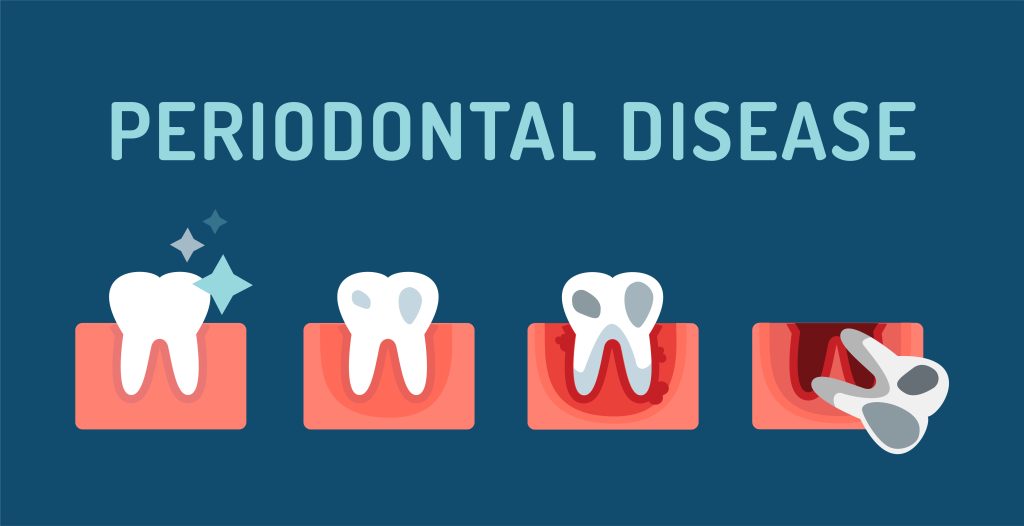
What Happens if You Don’t Take Care of a Tooth Abscess?
Once tooth decay begins, pulp damage can lead to periodontal disease if left untreated for long enough. In this stage, bacteria has spread beyond just one tooth; it may have infected other teeth, the bone surrounding the infection, the gums, and even the jawbone if left unchecked for too long. Advanced decay usually requires more involved treatment, such as tooth extraction (removal), if they cannot be saved through dental sealants, root canal therapy, or crowns/bridges. Healthy tissue must also be cleaned through scaling and root planing to help prevent cavities and infection in your mouth before a new tooth can be placed into position with crowns/bridges or implants as needed.
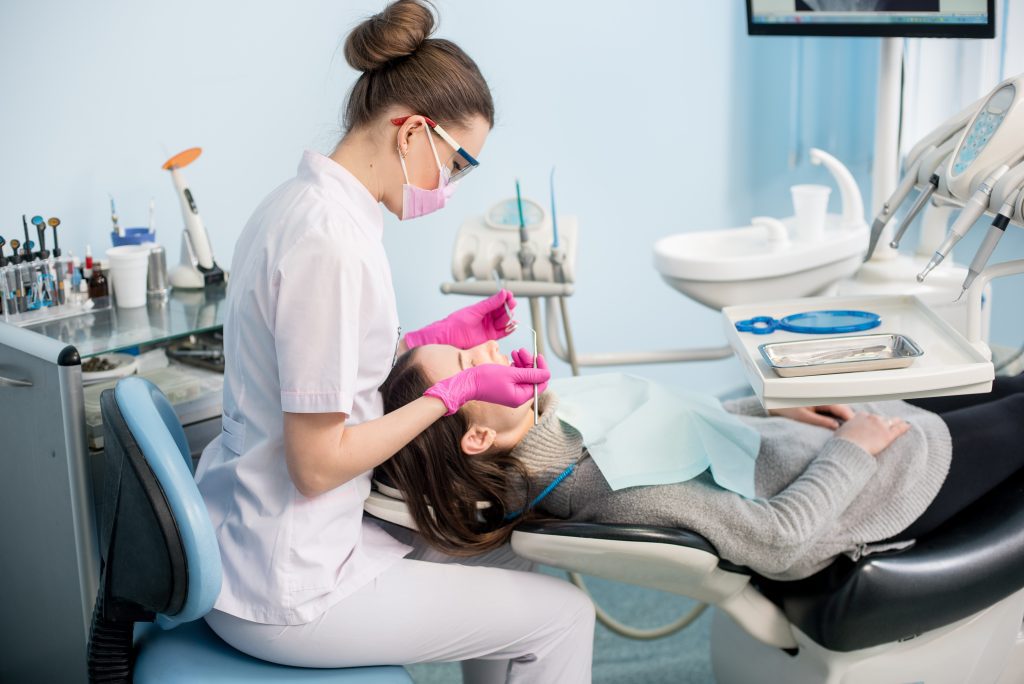
Preventative Care Tips to Avoid Tooth Decay and Tooth Loss
The best way to prevent developing the early stages of tooth decay are proper dental hygiene habits such as brushing your teeth twice a day with fluoride toothpaste, flossing daily (make sure to get the back teeth as well!), using an antibacterial mouthwash twice a day, eating a balanced diet that avoids sugary snacks and drinks (especially soda!), avoiding smoking tobacco products or using smokeless tobacco products, regular dental checkups/cleanings every six months or so, and using sealants if necessary to protect your teeth from further damage caused by bacteria as decay develops over time.
Preventing cavities is much easier than trying to fix them, so it’s crucial that you take care of your teeth and gums each day and visit the dentist for checkups and any questions on cavities and disease control.

Tooth Decay Is a Common Issue, but It’s Preventable if You Take Care of Your Teeth Properly!
To sum it up: Tooth decay is a common problem that most people experience at some point in their lives but one that doesn’t have to be permanent if caught early enough! The progression of tooth decay depends on many factors, including the type of bacteria present in your mouth and how often you engage in good dental hygiene habits. Understanding how to prevent tooth decay, as well as knowing the tooth decay stages, can help you catch any issues in your or your child’s teeth earlier so you don’t have to suffer more severe consequences later on down the line, like having an infected tooth extracted (ouch!).
Taking care of your oral health should start early—preventing tooth decay is much easier than treating it! So pay attention to any warning signs like sensitivity when eating hot/cold foods, visible discoloration on your teeth, or bad breath due to trapped food particles in cavity areas.
Stay proactive about maintaining a good oral health routine and preventing tooth decay, limit between-meal snacks, and see your dentist regularly for healthy teeth and gums for years to come! Regular visits with your dentist are essential for keeping an eye on any changes in your oral health and catching any problems before they become serious, requiring extensive treatments like extraction and replacement with implants or bridges/crowns. So don’t wait until it’s too late – start caring for your teeth today!
If you’re looking for more tips on preventing the development of any of the five tooth decay stages or a further dental infection, or if you need dental work to stop the decay in the early stages, contact Patient Empowered Dentistry. We would be happy to help! Reach out to us today!
